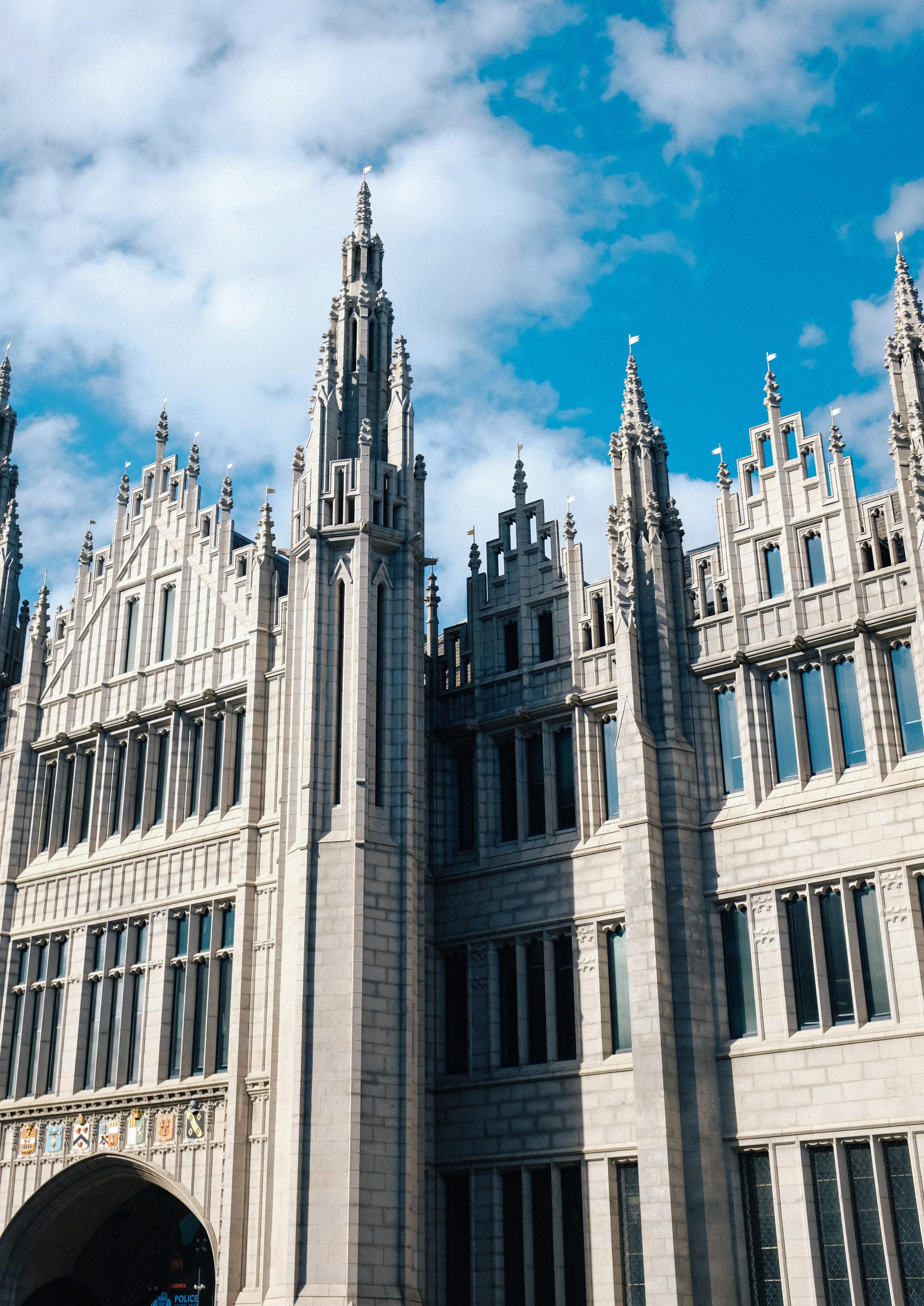








This property investment guide examines Aberdeen on the north east coast of Scotland. The country’s third largest city by population, it is home to many of Scotland’s biggest and most successful businesses.
For decades, Aberdeen has been closely associated with the offshore oil and gas industries. However, as the world seeks to shed its dependence on fossil fuels, so the city has been making a transition towards renewable energy and carbon-capture. This, in turn, is creating new opportunities for growth; opportunities that are set to accelerate in this decade and in the 2030s as the world’s economies pursue their Net Zero agendas.
For investors, the prospect of more jobs in higher-paying and more ‘future-proof’ industries is important. It should help to boost demand for higher quality accommodation – which is in short supply in the city – and, crucially, it should also improve people’s ability to pay for it.
Another important consideration is the rate at which regeneration projects are progressing in the city. Billions of pounds are now being funnelled into Aberdeen, creating more jobs and creating the foundations for ongoing growth.
In this guide, we’ll consider how these and other factors have been creating steadily improving conditions for property investment. We will examine those factors under the following broad headings:
• Strategic Position

• Aberdeen’s Economy
• Population and Demographics
• Economic Data
• Regeneration and Inward Investment

• The Education Sector
• The Aberdeen Housing Market
• Property Market Predictions
Until recently, Aberdeen was not regarded as an especially appealing property investment market. For a number of years, the slow decline of the fossil fuels industry had led the city to lose some of its sense of purpose. Accordingly, the inward migration of workers stalled, average earnings stagnated and property values slowly diminished.
In October 2022, the Scottish Daily Express reported that Aberdeen had been the only British city “to see a decrease in property prices over the past ten years.” Quoting ONS data, it said that “in 2012, the average house price in the Granite City was £160,525.
Judging only by these figures and by this backward-facing view, Aberdeen might indeed appear to be an unattractive market for investors. However, fortunes change and 2023 is shaping up to be a year of opportunity: a time when average values are unusually low but, potentially, set to begin a steady ascent.
A robust recovery is a realistic prospect for numerous reasons. Chiefly, these include:
• An excellent strategic position for growth in renewables and carbon-capture industries
• A steady shift to other high-value, high-tech sectors
• Massive inward investment
• Large-scale regeneration schemes in the city centre
• The creation of major industrial and commercial sites
• A growing student market
We’ll explore these various issues in more detail later on but, in more general terms, the coincidence of so many positive forces is very likely to create new jobs and to kickstart new economic growth.
Property values – both asking prices and rental returns – tend to rise as demand for accommodation increases, particularly if that demand is supported by an improvement in disposable incomes. This is why positive employment forecasts matter to investors; because more jobs mean more people moving into the city and more of its residents choosing to stay. This all helps to build local demand for good quality homes.
A higher proportion of better paid jobs – which typically results from a trend towards higher value sectors – also implies that more householders will have higher disposable incomes and will be better able to support their aspirations to buy or rent superior homes. Again, this helps to boost market activity and puts upward pressure on prices.
These trends are certainly beginning in Aberdeen, and the scale of ongoing regeneration projects suggests that they will only gain momentum in 2023 and beyond.



Aberdeen is the most northerly of Britain’s major industrial cities, but its relatively isolated position on the North Sea coast is also one of its greatest strengths. It became one of the UK’s principal gateways to offshore oil and gas reserves and, thus, a major operating base for large employers such as Shell. In turn, these top-tier corporations supported extensive supply chains, comprising a host of engineering, drilling, logistics and other companies.
In more recent years, that same location has made it a natural base for the development of offshore wind and other renewable energy industries. Local economic planners are seeking to establish the city as a centre of excellence for carbon-capture and hydrogen-based technologies.
Huge sums have already been invested in local schemes, such as the £180 million Net Zero Technology Centre, which was established in 2016 to support the development and deployment of technologies that could speed the transition towards a carbon-neutral economy. And there is much more to come. Examples include a £60 million Energy Transition Fund, and the ongoing Aberdeen Harbour Expansion Project, a £400 million investment scheme that will support the decommissioning of oil and gas platforms, and the development of new infrastructure for offshore renewables.
However, the city’s location isn’t only important from the perspective of heavy industry. For example, that same harbour expansion project is also expected to serve new cruise ship tourism and to boost Aberdeen’s promising visitor economy. The sector took a hit during the Covid pandemic but it is expected to recover steadily, thanks to the city’s scenic coastline, numerous visitor attractions and its proximity to other tourist hotspots such as the Cairngorms National Park.
For those drawn by history, sports, countryside and outdoor recreation, Aberdeen boasts a wealth of local attractions. Examples include:

• Aberdeen Beach
• Aberdeen Maritime Museum
• The Gordon Highlanders Museum
• Girdle Ness Lighthouse
• St Machar’s Cathedral
• Aberdeen Science Centre
• Art galleries, cinemas and theatres
• Aberdeen Sports Village
• Golf courses
• Leisure centres and sports grounds
• Codona’s Amusement Park
• Jump In Adventure Parks
• Duthie Park & Garden
• Hazlehead Park & Garden
• Donmouth Local Nature Reserve
A little further afield, tourists can visit a wealth of coastal resorts, castles, nature trails and country parks. The Cairngorms begin just 25 miles (40km) to the west.



Aberdeen is a key contributor to the Scottish economy, reportedly hosting a quarter of the country’s top 100 companies. Productivity is impressive and employment prospects appear excellent.
In its Economic Panel Policy Report, Aberdeen City Council writes that “Aberdeen and the wider North East region is one of the most prosperous parts of the UK, with a higher than average GVA per head. It has historically had a strong labour market where employment rates, earnings and productivity have been amongst the best performing regions in the UK.
“On a GVA per head basis… the North East remained some 31% and 19.3% above the Scottish and UK averages respectively in 2019, with earnings also higher than the national average.”
Importantly, ongoing growth looks to be distinctly sustainable. In a study for Skills Development Scotland, Oxford Economics predicted that Aberdeen would maintain its strong position, expanding its economy by an average of +2.9% per annum.
This growth will be achieved, in part, by the continuing success of the city’s move towards environmentally sustainable industries. However, Aberdeen is advancing on many fronts, as the local regeneration agency, Invest Aberdeen, explains:

“Aberdeen has a long history of innovation and discovery – from subsea technology to the invention of the first MRI scanner. With a rapidly growing hydrogen economy, Aberdeen is the UK’s leading hydrogen city and … has moved seamlessly into scientific, engineering, digital and low-carbon specialisms. The region has one of the largest concentrations of life scientists in Europe and the largest biologics cluster in the UK after Cambridge.”
This is only part of a long list of growth sectors, as we’ll examine later on.
1. Statista: GDP of Scotland 2020
2. Oxford Economics / City Centre Masterplan
3. National Records of Scotland, March 2022
4. ONS, November 2022
5. NOMIS, January 203
A report published by NOMIS finds that Aberdeen residents tend to be better qualified than the average UK citizen, and that local employment market features a higher proportion of higher-skilled roles. Over 30% of the workforce are engaged in professional occupations, which compares against a little over 25% across the UK. Similarly, where only 43.6% of British workers are qualified to NVQ level 4 or above, the figure is 54.4% in Aberdeen.
The presence of such a skilled workforce has helped the city to build a number of high-growth, highervalue sectors. Some notable examples include:
• Renewable energy
• Life sciences
• Digital technologies
• Food & drink
Renewable Energy and Low-Carbon Industries
Local economic planners see immense potential in this fast-evolving sector. The City Council notes that “around 200,000 people are forecast to be required in 2030 in the UK offshore energy sector, including in offshore wind, hydrogen and (carbon-capture and storage). This workforce mix is expected to evolve over time, with over 65% of the workforce in 2030 anticipated to support low carbon energy activities... Over 90% of the oil and gas workforce have skills transferable to adjacent energy sectors.”
Planners are now developing an ‘Energy Transition Zone’, which is expected to create up to 12,500 new jobs. Many of these will centre around the £400 million South Harbour expansion scheme and local energy technology hubs.
The Life Sciences
Aberdeen City Council notes that “the life sciences sector in North East Scotland has the high-growth potential for companies to attract investment and funding… The target is to double the number of companies in the region’s life sciences cluster by 2027.” The council also reports that the region already hosts around 75% of Scotland’s late-stage drug development companies and is one of two UK centres for biologics research and commercialisation. Further growth should be prompted by the construction of the city’s £40 million BioHub.
Digital Technologies
City planners report that between 2015 and 2020, employment in software and electronic publishing accounted for 6.3% of all such jobs in Scotland. Aberdeen is home to around 200 digital businesses and is well placed to attract more, thanks to more than £59 million of investment in gigabit internet speeds.
Food and Drink
Invest Aberdeen records that “food, drink and agriculture make up a significant part of the economy of North East Scotland and directly employ more than 22,000 people.” In terms of GVA, the Aberdeen City Region accounts for 17% of Scotland’s entire food and drink sectors, and 18% of all related employment.
Such is demand in these and other growth industries that, according to NOMIS, the ratio of jobs to the total working age population is well over 1.0 in Aberdeen. In other words, there are more job vacancies than workers in the city. This provides strong evidence that Aberdeen is set to attract more residents over the coming years as people migrate towards its various centres of employment.


New investment and regeneration is having a transformative effect on Aberdeen. In recent years, the decline of the fossil fuels industry precipitated thousands of job-losses, and this was undoubtedly a contributing factor to falling property values. Now, however, that trend is reversing. Tens of thousands of new jobs are being created as the city begins to take a leading role on the shift towards renewables, and thousands more will be generated by organic growth in other local industries.
Invest Aberdeen writes that “more than £12 billion of public and private infrastructure investment is due to be delivered over the next decade, marking an exciting time to be part of a region with a reputation as a genuine world-class business location.”
Some notable examples of growth, investment and regeneration schemes are listed below.
• Transport improvements (Aberdeenshire)
• City Centre Masterplan
£4.5 billion
£1 billion
• Aberdeen City Region Deal £250m capital funding
£868m leveraged investments
• Aberdeen Harbour Expansion £400m
• Development of new Grade A office space £200m
• Peterhead Port - infrastructure improvements £51m
• Airport refurbishment £20m
These and other schemes – together with the creation of outlying commercial and industrial parks – should help to support further growth in employment, average earnings and, consequently, people’s aspirations for better housing.
One of the projects that will most obviously shape the look and fortunes of Aberdeen is the City Centre Masterplan. On the dedicated website, the project partners note that it “is the biggest regeneration programme in the city’s history. Shaped by the community, the £1 billion vision outlines 50 economic, environmental and social projects to deliver prosperity and a better quality of life for all.”
The project is expected to generate upwards of 2,500 new jobs in the city and draw in hundreds of millions of pounds’ worth of private sector investment. Importantly, this will be sustained over a period of at least 25 years, so it should have a positive, nurturing effect on the local economy (and on the property market) for many years to come.
Aberdeen City Council explains that the masterplan will dovetail with other works, including transport improvements, writing that it “complements a number of other ambitious projects in the region, including the new Aberdeen Exhibition and Conference Centre; the Aberdeen Western Peripheral Route; and the expansion of Aberdeen Harbour. Planned infrastructure projects total £8.9 billion in value, a mix of public and private investment,
delivered before 2030.”
Nearly £9 billion of investment, focused upon a city of just 198,000 inhabitants, means denselyconcentrated spending and, consequently, it should have a massively positive effect on jobs, living standards, average disposable incomes and, ultimately, property values.
There are already indications that the plans are attracting more employers towards the urban centre. One of them is Shell, which as the local Chamber of Commerce reported in July 2022, has begun “moving its Aberdeen operation to The Silver Fin Building on Union Street to provide staff with a modern workplace, fit for the future.” It seems likely that as regeneration continues, more major employers will follow.

In an effort to provide the necessary space and infrastructure for ongoing growth, local planners haven’t just been investing in transport and the city centre. They have also been creating and expanding local employment sites right around the city.
The City Council’s Industrial Areas Guide for 2020 lists a total of 34 sites – of varying sizes – for new and ongoing development. A similar, updated list is included in Aberdeen County Council’s Local Development Plan (October 2022). Both reports illustrate the city’s tremendous potential for employment growth.

Significantly, the uptake of new premises is already under way. In April 2022, Knight Frank reported that agreements on commercial property had risen by 37% compared to the previous year. But not only had the number of new lettings increased, so had the size of the average unit. The agent notes that “average lets increased by +47%, compared to January-March last year, rising from 7,399sq ft to 10,851sq ft.”
Local employers clearly have big ambitions.
Although, in terms of demand for property, the greatest upturn will almost certainly arise from growth in the economy and private sector investment, the importance of Aberdeen’s education sector should not be underestimated. University students account for a larger proportion of the population here than in most British cities, and the sector supports around 10,000 local jobs
In addition to numerous schools, arts schools and colleges, Aberdeen hosts two universities. One is the University of Aberdeen, which is regarded as one of the UK’s top 20 educational institutions, and the other is Robert Gordon University, also known as RGU. Both are important to the property market in that they attract large numbers of students, they are major employers and their activities make substantial contributions to the local economy.
Although many first-year students will typically live in halls of residence, most will move out into the city in year 2 and beyond. Popular student rental areas include King Street, Rosemount and the city centre.


Average property prices declined over the ten years between 2012 and 2022. The downward trend accelerated with the loss of around 15,000 jobs between 2015 and the start of the 2020 Covid pandemic.
However, those job losses are being more than offset by rapid growth in numerous industries, including green energy, life sciences, the digital industries and others. The renewable energy market alone is poised to see the creation of more than 200,000 jobs over the next decade, and that’s to say nothing of organic growth in retail, tourism, food, business services and other key industries.
In short, a retrospective look at market performance overs recent years gives little indication of the potential that lies ahead. Aberdeen is set to become a high-growth city, and a leading centre for one of the most important, future-focused industries in the world today.
Consequently, the fact that house prices have fallen, and that they are well below the UK average, constitutes something of an opportunity for investors. It signals a chance to secure affordable residential property that should subsequently benefit from strong growth in rental demand and deliver excellent yields. Moreover, as the gulf between the supply and demand of good, energy-efficient homes widens, more modern local properties could also deliver significant capital gains.
Sources:
1: Zoopla House Price Index, December 2022

2: Zoopla Rental Index, December 2022
3. PropertyData, January 2023
The preceding figures are based on ‘all-property’ averages, so they don’t show differences in returns by property type. However, a recent feature published by Simply Business notes that while most types of Aberdeen property have delivered poor rates of capital growth, its flats and apartments have become increasingly popular among investors. Quoting data from Aldermore Bank’s latest Buy To Let City Tracker, it writes: “The top UK area for flats was London, followed by Scottish cities Glasgow, Edinburgh, and Aberdeen, with Manchester making the top five.”
UK-wide capital growth forecasts for 2023 are broadly negative – a reaction to the cost-of-living crisis, higher mortgage rates and global economic uncertainty. However, many sources expect prices to contract only for a short period, followed by a recovery in 2024.
UK-wide, Savills is predicting cumulative price growth of +6.2% by 2027, but it expects Scottish properties to fare better, appreciating by +9.5% over the same period.
It is also worth noting that the Bank of England expects inflation to drop back sharply in 2024, perhaps even to turn negative. Consequently, the real-terms returns on investment should be considerably better than during the second half of 2022, when capital growth rates tended to lag behind the rate of inflation.

At the time of writing, no British city or region is expected to deliver significant capital growth in 2023 – let alone a rate of growth that outpaces inflation. In Aberdeen, as in every other UK city, average values are expected to fall in the short term. However, many economists are forecasting a return to low inflation and to positive economic growth in 2024. If that happens, then it’s likely that some local property markets will recover much more quickly than others.
After ten years of lacklustre performance, Aberdeen is well placed to perform well when the wider economy starts to rebound. A large and successful private sector, huge levels of inward investment, a growing population and a highly skilled workforce should provide an excellent foundation for further improvements in employment and earnings. That, in turn, should support better investment returns in terms of both rents and capital values.
Like other promising markets that will be worthy of attention this year, Aberdeen displays some important and attractive characteristics:

• Very affordable prices
• Continued economic expansion
• High levels of inward investment
• Steady growth in employment
• Higher than average earnings
• Strong and reliable demand for housing
• Very limited supply, and a preponderance of older housing stock
For these reasons, Aberdeen could well prove to be one of Britain’s fastest-improving and highyielding buy-to-let markets in 2023 and beyond.

